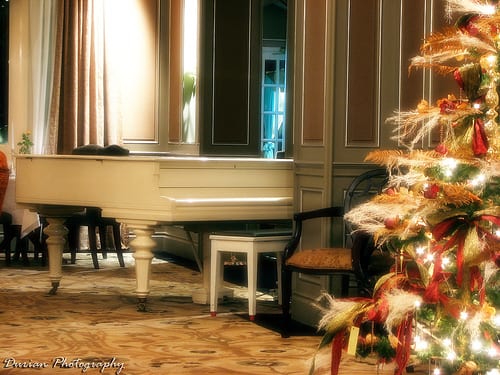 Over the past couple of weeks, we’ve talked about how the change in seasons can affect your violin, voice and guitar. Pianists are lucky in that they don’t have to spend time tuning their instrument before each use, and overall piano care and maintenance doesn’t take as much effort as, say, a woodwind or delicate string instrument does. However, this doesn’t mean you can just ignore it! Humidity can still affect your piano, the same way it affects a violin. This can lead to cracked wood, a warped soundboard, and pitch issues.
Over the past couple of weeks, we’ve talked about how the change in seasons can affect your violin, voice and guitar. Pianists are lucky in that they don’t have to spend time tuning their instrument before each use, and overall piano care and maintenance doesn’t take as much effort as, say, a woodwind or delicate string instrument does. However, this doesn’t mean you can just ignore it! Humidity can still affect your piano, the same way it affects a violin. This can lead to cracked wood, a warped soundboard, and pitch issues.
The Houston Piano Company recently posted a great article about humidity and your piano, with advice on how to avoid these problems. Here are a few of their tips:
- One way to counteract deterioration is to find a room with good ventilation and pay for a good air conditioning system. The less you fiddle with where a piano is, the longer it will stay in tune. So, if you live in a part of the world with minimal humidity changes, this is ideal. If not, find a room that will keep a stable humidity.
- Most changes are natural and expected, so counteract these tune changes by frequently tuning your piano. New pianos are most subject to this change, but even older pianos need tuning once or twice a year. If your piano’s tone is changing, make sure you find a reputable tuner every once in a while to help keep the tuning consistent.
- Sometimes humidity can frequently and substantially affect the quality of your piano’s timbre, action, and tone. So, to counteract this, try buying a humidity control system to install within the piano itself. There are usually three parts to this system: a humidifier to add moisture to the air, a dehumidifier to eliminate excess moisture, and a humidistat unit to sense the relative humidity of the air within the piano. These systems are incredible and help keep the humidity in and around the piano at an ideal level of 42%. The components are installed inside the case or under the soundboard so they are out of sight. They are easy to maintain and will help keep your piano in tip-top shape for years to come.
Suzy S.
